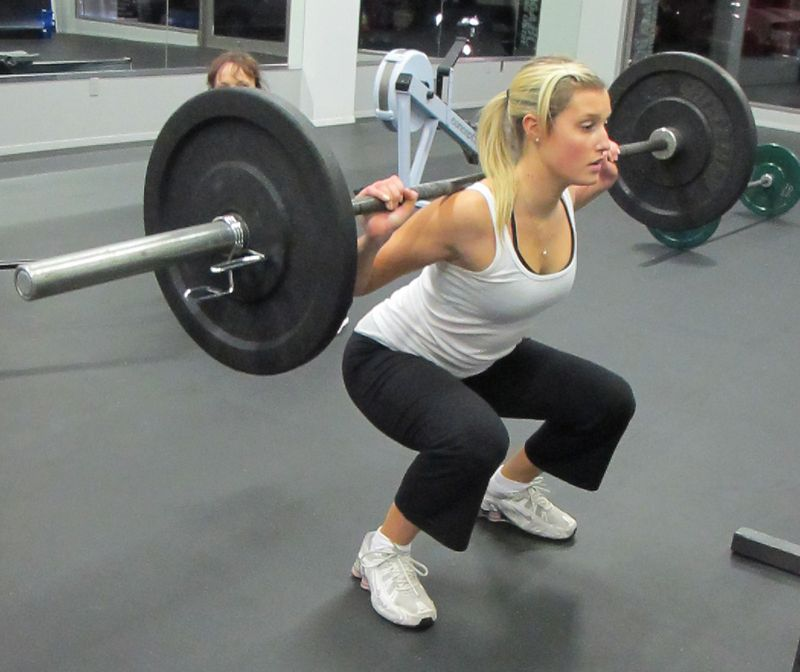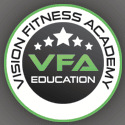In today’s “how to” we are going to take a looking at the barbell squat. The squat is regarded as one of the best exercise for shaping your entire lower body. This powerhouse movement can aid in great improvements in lower back, core and thigh strength but only practiced correctly! The squat is commonly performed with a loaded barbell braced on the fleshy part of the upper back (trapezius muscle) for the duration of the exercise, but it also has a plenty of variations’ to suit first time squatters and those with limited equipment access. The main muscles involved in the squat are the quadriceps (front of the legs), gluteals (buttocks), erector spinae (lower back), abs, and the hamstrings (back of the legs).

How To squat
- Using a squat rack or Smith machine adjust an unloaded barbell to your shoulder height position.
- Stand under the bar and rest it on the trapezius muscle/upper back – a bit higher than the posterior deltoid (rear head of the shoulder muscle). Take a firm grasp on the bar.
- Take a deep breath, contract the abdominal muscles (core), slightly arch the lower back and lift your chest.
- Look straight ahead and proceed to lift the barbell from the squat stand/Smith machine.
- If using a rack take one or two steps back, and position your feet shoulder width and parallel to each other. Push your butt back, bend your knees and lower down avoiding rounding your lower back.
- If using a Smith machine position your feet under the barbell shoulder width with feet parallel to each other. Push your butt back, bend your knees and lower down avoiding rounding the low back.
- When thighs are horizontal to the floor, proceed to straighten your legs and return to the start position at this point breath out. Make sure you keep your feet flat at all times.
Troubleshooting the Squat
The most common problem that occurs with the barbell squat when first learning this exercise is rounding at the lower back, which is responsible for most lumbar spine injuries during this exercise. Using different variations of the squat movement can aid in the development of good practice.
The basic learning squat I use is the stability ball squat variation up against the wall.

How To Do Stability Ball Squats
- Position the stability ball within the natural arch of your lower back and place your feet shoulder width and parallel to each other.
- Take a deep breath, contract the abdominal muscles (core), slightly arch the lower back and lift your chest.
- Keeping the chest lifted, shoulders open and using the stability ball as a guide slowing slide down the ball reaching backwards with the bottom.
- When thighs are horizontal to the floor, proceed to straighten the legs and return to the start position at this point breath out.
Using this variation of squat provides options to progress.
- Simply holding dumbbells adds to the intensity and physical demands on the body especially the quads and core muscles.
- Using a broomstick as you would a barbell simulates the barbell version while keeping the good learning form set by the stability ball.
Most Common Squat Variants
- Bodyweight squat – no equipment? No problem! This option suits the endurance, home exerciser and circuit.
- Box squat – this form of squat is performed by sitting on a bench for one or two seconds before standing and helps develop explosive strength.
- Front squat – resting a barbell on the upper part of the chest with an overhand grip…a common athletic exercise for the legs.
- Power squats – like the barbell squat expect that the legs are farther apart and toes pointed out.
- Leg press – a resistance machine form of squat. Not as good as you don’t need to use your core muscles but better than leg extensions!
As you can see there are many different types of squat and I’ve only listed a handful. Why don’t you give this super exercise a try for an lower body hit. Start slowly with higher reps and lighter load until you get established, use mirrors and seek local advice from a trainer if you feel you need a little more guidance.
Enjoy!
Andreas Michael
For more from Andreas, please visit…
http://www.metrohealthandfitness.co.uk
http://www.youtube.com/user/metrofitness
http://www.facebook.com/pages/Metro-Fitness/111807072215098
Popularity: 6% [?]










Thank you for posting the how-to squat article. I found it useful and it bettered my understanding of the squat exercise.